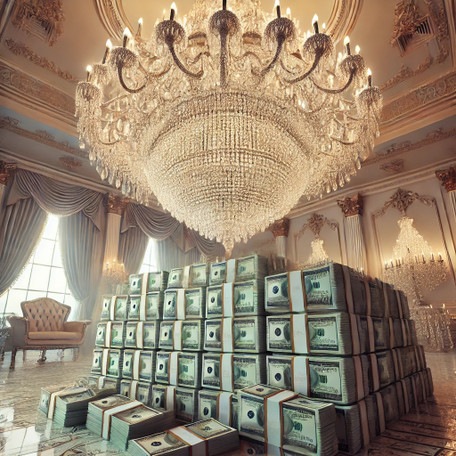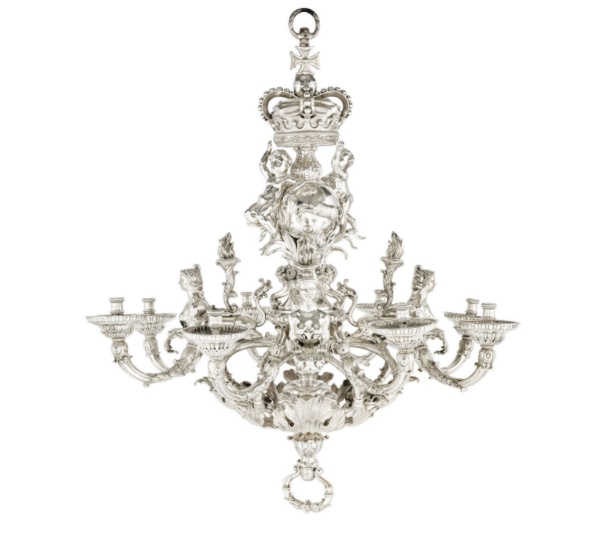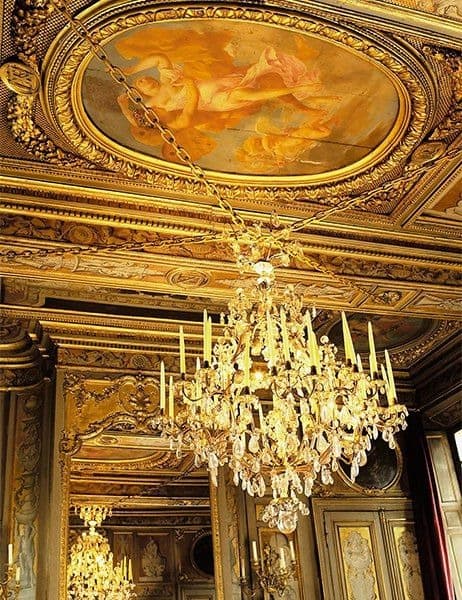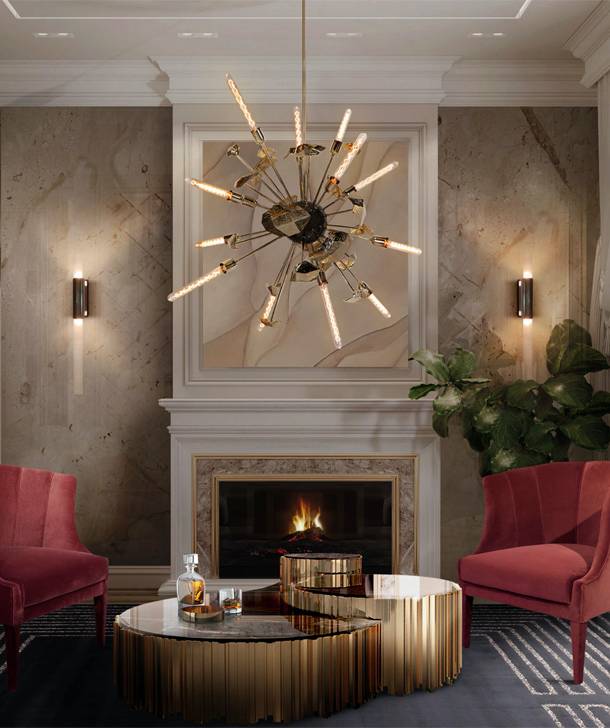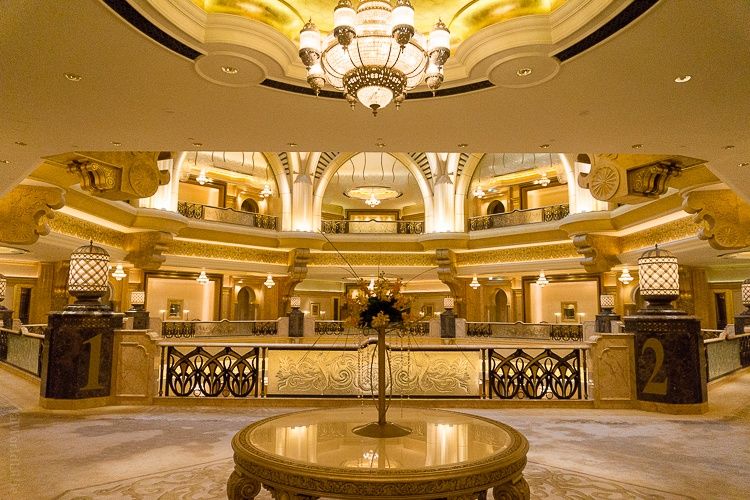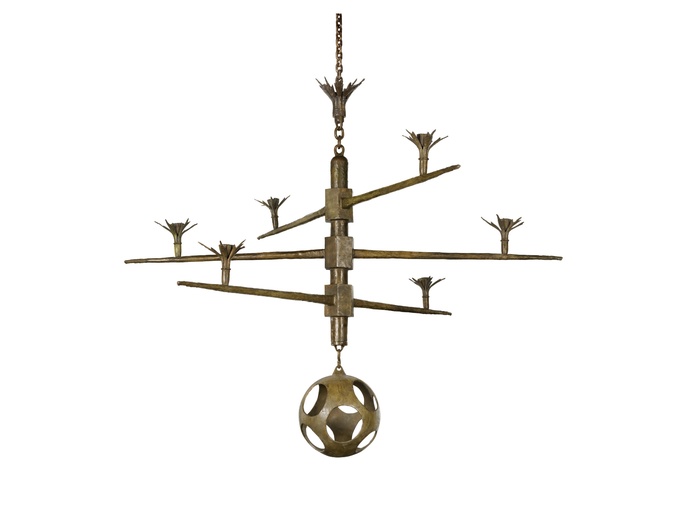The Top 5 Most Expensive Chandeliers Ever Sold
8th Aug 2024
Here are the top 5 most expensive chandeliers ever sold:
- Givenchy Royal Hanover German Silver Eight-Light Chandelier - This chandelier was sold for over $9 million. It was part of a Christie’s auction and is notable for its historical and artistic significance.
- Varnished and Gilt-Bronze Cut-Glass Chandelier - Valued at $1.7 million, this chandelier is from the collection of Baron de Redé. It features a gilt-bronze frame with elaborate decorations including acanthus leaves, satyr masks, and crystal pendants.
- Supernova Chandelier - Designed by Boca do Lobo, this chandelier sold for $2.8 million. It is made of handcrafted aluminum tubes with a gold-plated finish, resembling an explosion of light.
- Regent Diamond Chandelier, Emirates Palace Hotel - The most expensive chandelier in Dubai is the "Regent Diamond Chandelier," which is valued at $9.6 million.
- Alberto Giacometti chandelier - Sold for $3.5 million, this chandelier purchased for just $300 from an antique shop in London in the 1960s.
These chandeliers are not only remarkable for their cost but also for their intricate designs and historical significance.
The history and details of the top most Most expensive chandeliers in the world
1. The Givenchy Royal Hanover German Silver Eight-Light Chandelier
Renowned as the most expensive chandelier ever sold, fetching over $9 million at a Christie's auction in 2011. This exquisite piece was commissioned by King George II of Great Britain for his palace in Hanover and designed by the king’s architect, William Kent. The chandelier was crafted by Balthasar Friedrich Behrens, a celebrated Hanoverian silversmith, and was delivered on September 13, 1736.
The chandelier's intricate design features a wealth of symbolic elements, including anthacus (a decorative motif resembling the acanthus plant), lion paws and masks, a cornucopia, the prancing horse of Hanover, and naked putti, all surmounted by the royal crown. These details highlight the opulence and craftsmanship characteristic of the Baroque period.
Originally, the chandelier remained within the royal family until it was acquired by Hubert de Givenchy in 1924. Givenchy, a renowned fashion designer, later added this masterpiece to his collection, enhancing its historical and artistic value.
2.The Varnished and Gilt-Bronze Cut-Glass Chandelier
Valued at $1.7 million, is a distinguished example of 19th-century craftsmanship. This chandelier is part of the collection of Baron de Redé, a prominent figure in French society known for his exquisite taste and luxurious lifestyle.
Key Features:
- Design and Materials:
- The chandelier features a gilt-bronze frame adorned with intricate decorations including acanthus leaves, bearded satyrs, and feminine faces.
- It incorporates crystal daggers and pendants that hang from twisted branches, adding a reflective quality to the light.
- The central structure includes a fluted shaft with a frieze of posts, water leaves, and seeds.
- Historical Significance:
- The chandelier was crafted around 1830 and reflects the opulent style of the era.
- It was originally housed in the Hotel Lambert, a historic mansion on Île Saint-Louis in Paris, which Baron de Redé owned and filled with art and luxury antiques.
- Auction and Value:
- This chandelier fetched $1.7 million at an auction, showcasing its significant value not only as a functional piece but also as a work of art.
- The auction highlighted the chandelier's intricate design and historical importance, making it a coveted piece for collectors.
Importance in Art and Design:
The Varnished and Gilt-Bronze Cut-Glass Chandelier is more than just a lighting fixture; it is a symbol of historical luxury and artistic achievement. The combination of gilt-bronze and cut-glass elements creates a stunning visual effect, making it a centerpiece in any setting.
Additional Information:
This chandelier exemplifies the luxurious and detailed design aesthetic of the 19th century, and its provenance from the Hotel Lambert adds to its allure. Its high auction price reflects its desirability among collectors and connoisseurs of fine art and antique furnishings.
3. The Supernova Chandelier
An extravagant lighting fixture designed by the luxury brand Boca do Lobo. This chandelier, which sold for $2.8 million, is renowned for its unique design and high-quality materials making it one of the most expensive chandeliers in the world.
Key Features:
- Design and Materials:
- The Supernova Chandelier is composed of a series of handcrafted aluminum tubes.
- It features a distinctive gold-plated finish that enhances its luxurious appeal.
- The design is inspired by the concept of a supernova, with the chandelier resembling a vibrant explosion of light, creating a dynamic and eye-catching visual effect.
- Craftsmanship:
- The chandelier showcases exquisite craftsmanship, with each aluminum tube meticulously crafted and arranged to achieve the desired effect.
- The gold-plated finish adds to the opulence and grandeur of the piece, making it a standout in any setting.
- Artistic Inspiration:
- The design of the Supernova Chandelier is meant to capture the brilliance and intensity of a supernova, the powerful explosion of a star.
- This inspiration is reflected in the chandelier’s dynamic form and radiant appearance, which make it a focal point in any room.
Importance in Design:
The Supernova Chandelier is not just a lighting fixture but a piece of art that reflects the innovative and luxurious approach of Boca do Lobo. Its high price and unique design make it a highly sought-after item among collectors and connoisseurs of fine art and luxury furnishings.
Context and Popularity:
- The chandelier is part of Boca do Lobo's collection of luxury home decor, which is known for its bold designs and exceptional quality.
- The Supernova Chandelier has been featured in various design exhibitions and luxury homes, emphasizing its status as a symbol of luxury and artistic excellence.
Conclusion:
The Supernova Chandelier stands out in the most expensive chandeliers sold for its striking design, premium materials, and exceptional craftsmanship. It is a testament to Boca do Lobo's commitment to creating unique and luxurious pieces that push the boundaries of traditional lighting design.
4. Regent Diamond Chandelier, Emirates Palace Hotel
The most expensive chandelier in Dubai is the "Regent Diamond Chandelier," which is valued at $9.6 million. This masterpiece is located in the Emirates Palace Hotel and features over 600,000 high-quality crystals. The chandelier measures 10 meters in diameter and 15 meters in height, weighing 2.2 tons. It consists of 12 sections that can rotate and change shape, creating a dazzling display of light that can be controlled by a computer to adjust the speed, direction, and color of the rotation and lighting.
Another notable example is the bespoke chandeliers by Hedes Lighting, which offer customizable options to fit the diverse and luxurious tastes of Dubai's elite. These chandeliers are found in prestigious locations, from palatial residences to upscale hotels, and emphasize cultural richness and architectural harmony.
Additionally, the Bohemia Crystal collections in Dubai feature high-end chandeliers that combine contemporary designs with timeless elegance, catering to the sophisticated interior styles of the region
5. Alberto Giacometti chandelier
In an extraordinary turn of events, a chandelier designed by the famed Swiss artist Alberto Giacometti was purchased for just $300 from an antique shop in London in the 1960s. The chandelier, identified as a rare and valuable piece, was bought by British painter John Craxton, who recognized its significance. Craxton, who was familiar with Giacometti's work and had a connection to the original owner, art collector Peter Watson, hung the chandelier in his music room until his death in 2009.
This bronze chandelier, standing at 53 inches tall, was initially commissioned by Watson for the offices of his literary magazine, Horizon. After the magazine closed in 1950, the chandelier ended up in an antique shop where Craxton discovered it. Decades later, it was auctioned at Christie's in London, fetching an astonishing $3.5 million. This sale not only highlights the chandelier's immense value but also showcases the keen eye and foresight of Craxton in recognizing a masterpiece among the antiques.
The Giacometti chandelier, designed by Alberto Giacometti, is a remarkable piece that reflects his distinctive style and artistic vision.
Design Features:
- Material: The chandelier is made of bronze, showcasing Giacometti's preference for robust and enduring materials that could be intricately worked into detailed forms.
- Structure: It features a series of elongated, slender arms that radiate from a central stem. These arms are typical of Giacometti’s work, emphasizing his fascination with elongated forms and skeletal structures.
- Lighting Elements: The chandelier includes multiple light fixtures at the ends of these arms, each designed to hold a bulb, creating a balanced and harmonious distribution of light.
- Artistic Style: The design incorporates Giacometti’s characteristic texture and detailing, with a surface that is often rough and unpolished, giving it a raw and organic feel. This texture helps to play with light and shadow, adding depth and complexity to the piece.
- Dimensions: The chandelier is relatively large, standing at 53 inches tall, making it a prominent feature in any room.
Artistic and Historical Context:
- Influence: Giacometti was influenced by Surrealism and existentialism, and his work often explores themes of human presence and absence, which can be seen in the skeletal and almost otherworldly form of the chandelier.
- Commission and Provenance: Originally commissioned by Peter Watson for the London office of his literary magazine, Horizon, the chandelier was part of a collection of artworks that emphasized modernist and avant-garde aesthetics.
Importance:
- Value: The chandelier’s design, combined with its historical significance and Giacometti’s reputation, has made it an immensely valuable piece, evidenced by its sale price of $3.5 million at auction making it one of the most expensive chandeliers in the world.
- Cultural Significance: This piece is not just a functional lighting fixture but a work of art that encapsulates Giacometti’s artistic explorations and the cultural milieu of the mid-20th century.

